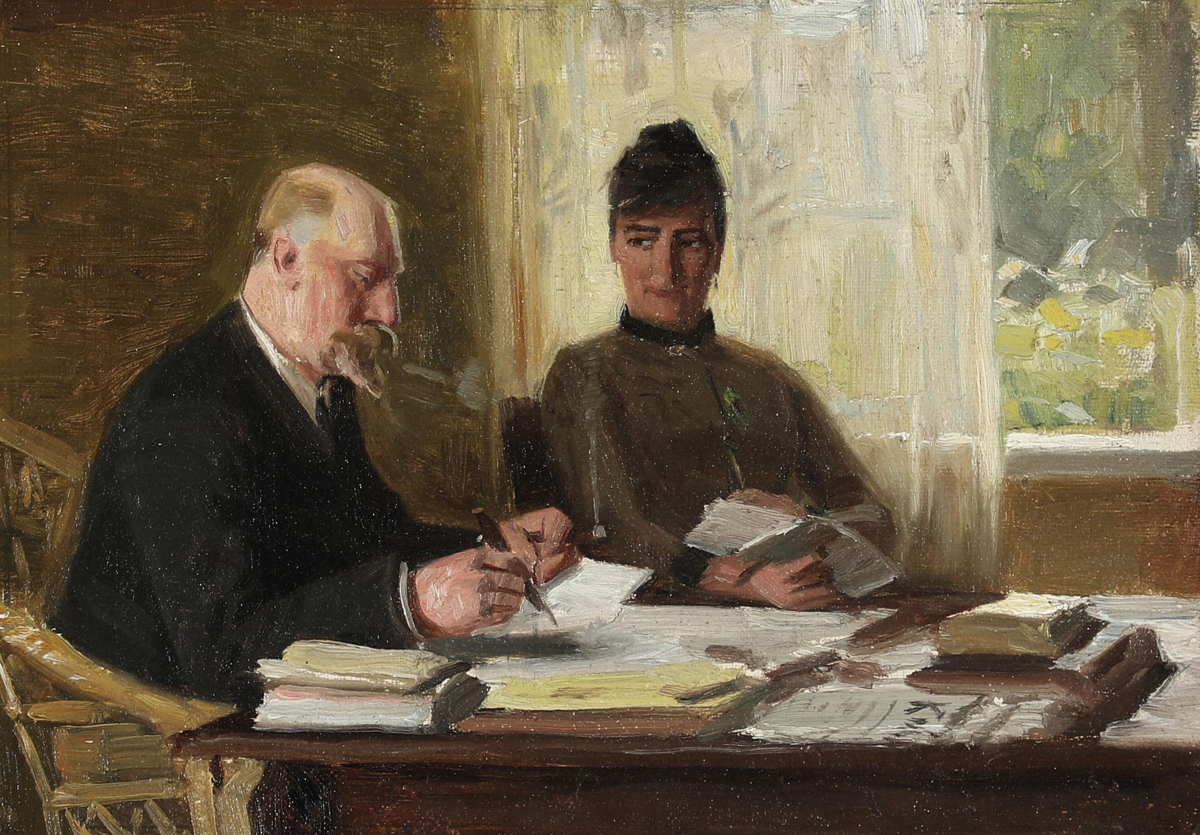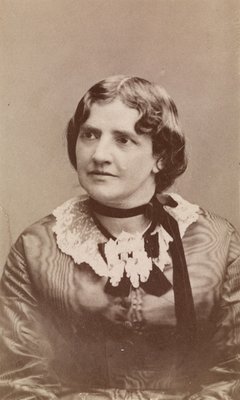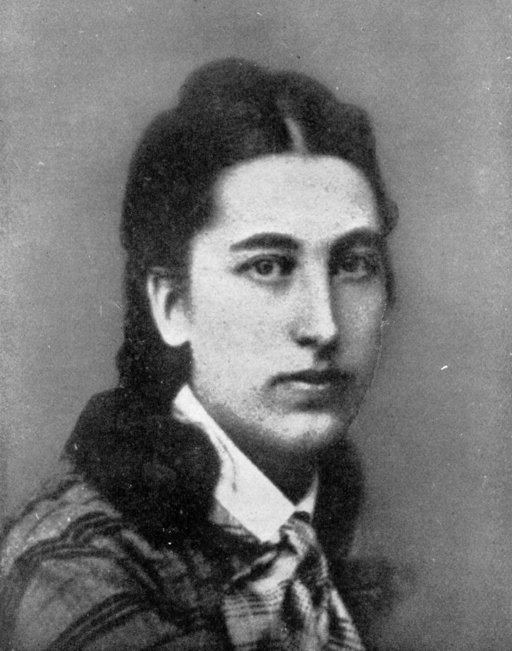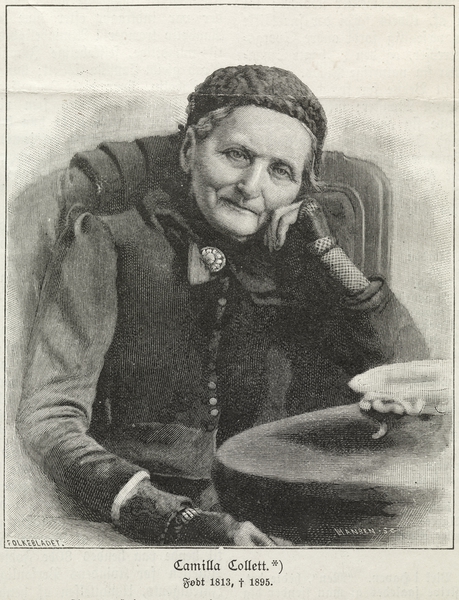Female Writers of the Scandinavian Modern Breakthrough
The efforts of pioneering women writers gained momentum during this well known literary movement.
Summary: This literary movement from the 1870s until the turn of the century saw writers demand changes in the rigid social structures including those that repressed women. Pioneering women writers across Scandinavia had been trying to expose the unequal life chances of men and women since at least the 1820s. The urgency of reform gained momentum through Modern Breakthrough writing and the call for greater autonomy was taken up by many women writers, including Amalie Skram, Victoria Benedictsson and Adda Ravnkilde.
The Scandinavian Modern Breakthough was a literary movement which is usually reckoned to begin in 1872, when the Danish critic Georg Brandes (1842-1927) published his lectures on Hovedstrømninger i det 19. Århundredes Litteratur (Main Currents in Nineteenth-Century Literature). Brandes called for a socially engaged literature which would deal with contemporary issues in a realistic manner, replacing the more romantic and idealistic tradition of the mid-century. In many ways Brandes’ work was a catalyst for what was already happening, as writers like Henrik Ibsen (1828-1906) and Bjørnstjerne Bjørnson (1832-1910) in Norway and J.P. Jacobsen (1847-85) in Denmark were addressing the need for reform in laws and customs. Demands for change in the social conventions which repressed women were bolstered by the growing movements for women’s rights , and women writers were not slow to add their voices to the calls for reform.
Women writers struggle to be heard from the 1820s
Even earlier in the century, pioneering women writers were drawing attention to the unequal life chances of men and women. In 1854-55 Norwegian writer Camilla Collett (1813-95) published Amtmandens Døttre (The District Governor’s Daughters), which focussed on the limited options available even to girls growing up in relative prosperity; either they got married – hopefully but not necessarily for love – or they stayed at home as a spinster aunt-come-housekeepers. The Swedish Fredrika Bremer (1801-65) too, in Familien H*** (1830-31, The Colonel’s Family), produced an entertaining story of family life, which through the shrewd observations of the housekeeper Beata Workaday portrayed the dire effects of repressed passion on silenced women.
Many women writers in Scandinavia later contributed through their fiction and their journalism to the growing demands for social reform, and for changes in the law to give women more rights over their own property and their own lives. Copenhagen was to all intents and purposes the literary capital of both Denmark and Norway during the nineteenth century, and that was where the works of Modern Breakthrough writers from both countries were most often published.
Norway
Examples from Norway include Aasta Hansteen (1824-1908), whose vigorous campaigning attracted censure and ridicule in her early life; and Magdalene Thoresen (1819-1903), who managed to support herself by her writing, and in Billeder fra Midnatsolens Land (1884-86, Pictures from the Land of the Midnight Sun) penned finely observed portraits of women’s life in rural Norway. The early novel of Hulda Garborg (1862-1934), Et frit Forhold (1892, An Open Relationship) follows the struggles of a young shop assistant through seduction, pregnancy and the eventual death of her child, demonstrating that it is possible to find the strength to survive even such tragedy.
Denmark
In Denmark there were several women writers who foregrounded women as independent subjects, not mere objects of men’s desire or men’s power. Apart from Amalie Skram and Adda Ravnkilde (see below), authors less well known to posterity include Olivia Levison (1847-94), who wrote mostly short stories or noveller in which women’s energy and sexual desire is often thwarted by convention and men’s inability to respond. Erna Juel-Hansen (1845-1922) was a pioneer in writing about the lives of financially independent women, e.g. in Terese Kærulf (1894), at the same time as helping to introduce modern pedagogy and largely supporting her own family. Agnes Henningsen (1868-1962) had a succès de scandale with her descriptions of ‘free love’, stories of women who actively follow their own desires, whatever the costs.
Sweden
Swedish writers were less directly involved in the movement, although e.g. some of August Strindberg’s (1849-1912) early works, such as Röda Rummet (1879, The Red Room), make a vivid case for social reform. Selma Lagerlöf (1858-1940) was a storyteller whose entertaining tales often commented obliquely on the silencing or sidelining of their female characters. The popular playwright Alfhild Agrell (1849-1923) took up contemporary social problems in plays such as Räddad (1882, Saved), reminiscent of Ibsen’s Gengangere (1881, Ghosts) in its portrayal of a profligate husband who destroys the lives of his wife and son. Anne-Charlotte Leffler (1849-92) spoke out boldly in support of freedom for women; her play Sanna Kvinnor (1883, True Women) echoes Agrell’s play in its condemnation of the ruin caused by a dissipated husband. Her most outspoken work is the novel Kvinnlighet och erotik (1883, Femininity and Eroticism), set in a sensual Italian landscape, in which traditional notions of femininity are contrasted with a woman’s right to explore her own sexuality.
Many of these writers struggled to make a living, and many were forgotten by literary historians until the twentieth-century women’s movement rediscovered them and gave them new prominence in Nordic and national histories of women’s writing. In such a short article it is impossible to examine all who deserve attention, so I have chosen to focus on three, the Dano-Norwegian Amalie Skram, the Swedish Victoria Benedictsson and the Danish Adda Ravnkilde.
Many female writers from the nineteenth century were not rated very highly in their lifetime and were largely forgotten by literary historians until the twentieth-century women’s movement rediscovered them and gave them new prominence in Nordic and national histories of women’s writing.
Three pioneers of the Scandinavian Modern Breakthrough
Amalie Skram (1847-1905) started writing late; it was not until her second marriage to Erik Skram, when she moved to Copenhagen in 1884, that she began to publish novels. Several of her works address the problem of the double standard, which encouraged men to be sexually active whilst expecting their future brides to remain chaste. Constance Ring (1885) and Forraadt (1892, Betrayed) focus on the mismatch between men of the world and the young girls who become their wives without any idea of what marriage involves – often with tragic results for both parties. In Fru Inés (1891), set in Constantinople, the wife in a loveless marriage seeks sexual fulfilment with a younger lover, but on finding herself pregnant becomes trapped in a downward spiral from which there is no escape. Lucie (1888) looks at the other side of the coin, with a dancing girl who becomes the mistress of a respectable civil servant; he decides to marry her and make her into a model wife – only to destroy her with his censure.
Skram also wrote an epic story of a peasant family from Western Norway, the four-volume Hellemrysfolket (1887-98, The People of Hellemyr), which has often been compared to Zola’s Naturalist works in its unsparing depiction of grinding poverty and a family’s desperate and doomed attempts to escape from the degrading influence of their early environment. It was this work which was most highly rated by critics during her lifetime, and only when feminist writing became an object of study were her ‘novels of marriage’ re-evaluated and became essential reading.
Victoria Benedictsson (1850-88), like Amalie Skram, had married young and unhappily, this time to an elderly widower with five children; she also began writing later and about women whose experiences mirrored her own. Central to her works is the problem of female desire and the conflicts it causes for individual women in a society unwilling to acknowledge its existence. Her first novel Pengar (1885, Money) tells of how young Selma is persuaded into an unhappy marriage to an older man, and later experiences a dawning passion for her cousin Richard. This forbidden desire must be quenched, as she cannot accept it herself, and she rejects his love; but it gives her the strength to leave her marriage and find fulfilment as an artist. The later Fru Marianne (1887, Mistress Marianne) explores a similar dilemma; this time Marianne chooses to remain in her marriage and try to find fulfilment in work and motherhood – but the split in her character remains.
Creative fulfilment was however short-lived for the author, who had only found the space to write when she became unwell and needed to recuperate. In her short periods in Copenhagen she found a circle more responsive to her literary aspirations. Her much later published diary, Stora boken and Dagboken (The Big Book and The Diary, written 1882-88) reveals both her development as a writer and her passion for Georg Brandes. Her discovery that her commitment to him was not reciprocated was a major factor in her decision to kill herself.
Adda Ravnkilde (1862-83) seemed in her early years to have a greater chance of success as an author, being encouraged by her parents to study in Copenhagen, where the ubiquitous Georg Brandes became her mentor. She showed great promise, and her works Judith Fürste and To Fortællinger (Two Stories) were written when she was around 20. All three stories are concerned with the unequal sexual relationships in contemporary society and with women’s struggle for self-determination. Judith Fürste is the story of a marriage which becomes a power struggle between husband and wife, and ends with the wife’s submission – of her own free will. Female autonomy is finally achieved in the story ‘Tantaluskvaler’ (Torments of Tantalus), where the heroine becomes a writer.
Yet the positive message of this novel is somewhat undermined by the fact that its author killed herself shortly after writing it, at the age of 21. A final part of her story is that all three of her manuscripts were published after her death in 1884, after being ‘shortened and corrected’ by male editors – who thus reasserted control over her creativity. What she really wrote we do not know, as all of her original manuscripts have disappeared.
All three of these authors demonstrate the urgency of the need for the reform of society expressed in Modern Breakthrough writing, especially for women, and the difficult path to autonomy.
Literary history can shed light on social movements.
This article is published in response to readers' interest in the Scandinavian Modern Breakthrough and in the development of women writers.
Further reading:
- Elias Bredsdorff, Den store nordiske krig om seksualmoralen [The great Nordic war about sexual morality] (Copenhagen: Gyldendal, 1973).
- Elisabeth Møller Jensen et el., Nordisk kvindelitteraturhistorie I-V. Vol. II: Faderhuset [Nordic women's literature history I-V. Vol. II: Father's House] (Copenhagen: Rosinante, 1993-98).
- Helena Forsås-Scott, Swedish Women’s Writing 1850-1995 (London: Athlone Press, 1997).
- Pil Dahlerup, Det moderne gennembruds kvinder [The women of the modern breakthrough] (Copenhagen: Gyldendal, 1983).




